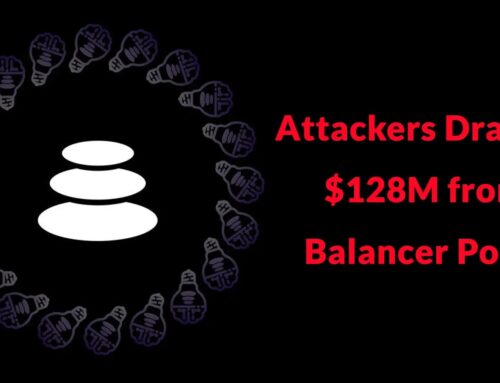
Beware of Malicious Facebook Ads With Meta Verified Steals User Account Details
A sophisticated malvertising campaign is actively exploiting the desire for Meta Verified status, luring unsuspecting Facebook users into installing malicious browser extensions. This insidious scheme, promoted through seemingly legitimate video tutorials on Facebook ads, promises the coveted blue verification tick without the associated subscription fee. The reality, however, is far more sinister: these extensions are engineered to harvest sensitive user data, turning a quest for online prestige into a serious security compromise. Cybersecurity analysts and users alike must understand the mechanics of this attack to protect themselves and their organizations.
The Deceptive Lure of Fake Meta Verified Ads
The core of this malvertising campaign lies in its persuasive use of social engineering. Malicious actors are creating and promoting advertisements on Facebook that mimic genuine tutorials for acquiring Meta Verified. These ads often showcase detailed steps and promises of a “free” verification badge, exploiting the widespread desire for social validation and authenticity indicators on platforms like Facebook and Instagram.
The ads are crafted to look highly professional, often featuring clean interfaces and step-by-step instructions. This level of production quality helps them bypass initial content moderation checks and builds trust with potential victims. Users, believing they are following a legitimate guide to bypass Meta’s subscription model, are then directed to download a fabricated browser extension.
The Malicious Browser Extension: A Data Harvesting Tool
Once a user clicks on the deceptive ad, they are prompted to install a browser extension falsely branded as “Meta Verified.” This seemingly innocuous extension is, in fact, a sophisticated piece of malware designed for data exfiltration. Unlike legitimate extensions that enhance browsing or productivity, this malicious variant operates stealthily in the background.
Upon installation, the extension gains broad permissions within the user’s browser environment. These permissions are then leveraged to steal a wide array of sensitive information. While specific data points observed in this campaign include user account details, the potential for data theft extends to:
- Login credentials for other websites.
- Financial information (if accessed via the browser).
- Browser history and cookies.
- Personal identifiable information (PII).
- Session tokens, allowing attackers to hijack active user sessions without needing passwords.
The danger is compounded by the fact that many users may not immediately notice the compromise, as the extension might not overtly disrupt their browsing experience. The data theft occurs silently, often over an extended period, before the user becomes aware of any unauthorized activity on their accounts.
Remediation Actions and Best Practices
Defending against such sophisticated malvertising campaigns requires a multi-pronged approach, combining technical safeguards with user education. For IT professionals and individual users, the following actions are crucial:
- Exercise Extreme Caution with Ads: Always be skeptical of ads, especially those promising things “for free” that typically require payment (like Meta Verified). Verify the legitimacy of an offer directly on the official platform (e.g., Meta’s official website) before clicking on any third-party links.
- Inspect Browser Extensions: Regularly review and audit installed browser extensions. Remove any extensions that are not used, seem suspicious, or were installed inadvertently. Brave, Chrome, Edge, and Firefox all provide extension management interfaces.
- Verify Extension Permissions: Before installing any new browser extension, meticulously review the permissions it requests. If an extension for a simple task requests broad access to your browsing data or history, it’s a significant red flag.
- Use Reputable Security Software: Employ robust antivirus and anti-malware solutions that can detect and block malicious downloads and extensions. Keep these tools updated regularly.
- Enable Multi-Factor Authentication (MFA): Implement MFA on all critical online accounts, especially social media and financial services. Even if credentials are stolen, MFA acts as a critical second layer of defense.
- Keep Browsers and Operating Systems Updated: Ensure your web browser, operating system, and all software are kept up to date. Updates often include patches for vulnerabilities that attackers might exploit.
- Educate Users: For organizations, conduct regular cybersecurity awareness training for employees. Emphasize the risks associated with clicking on suspicious links and installing unverified software or extensions.
- Report Suspicious Activity: If you encounter a suspicious ad on Facebook, report it immediately to Facebook’s security team. Similarly, if you suspect your account has been compromised, change your password and review recent activity.
Tools for Detection and Mitigation
Leveraging appropriate cybersecurity tools can significantly enhance your defense against browser-based attacks and data theft.
| Tool Name | Purpose | Link |
|---|---|---|
| Browser’s Built-in Extension Manager | Review, enable, disable, and remove installed browser extensions. Essential for manual auditing. | Varies by browser (e.g., chrome://extensions for Chrome, about:addons for Firefox, edge://extensions for Edge) |
| VirusTotal | Analyze suspicious files (like extension packages) and URLs for malicious content detected by multiple antivirus engines. | https://www.virustotal.com/ |
| Malwarebytes Browser Guard | Blocks malicious ads, trackers, and warns about suspicious websites before they load. | https://www.malwarebytes.com/browserguard |
| uBlock Origin | An efficient wide-spectrum content blocker that can help prevent malvertising and tracking scripts from loading. | https://ublockorigin.com/ |
| Endpoint Detection and Response (EDR) Solutions | For organizations, EDR platforms provide advanced capabilities to detect suspicious processes, network connections, and data exfiltration attempts on endpoints. (e.g., CrowdStrike Falcon, SentinelOne) | (Vendor-specific) |
Conclusion
The malicious Facebook ad campaign leveraging fake “Meta Verified” browser extensions serves as a stark reminder of the persistent and evolving threat landscape. Cybercriminals are continually refining their social engineering tactics, exploiting trending topics and human desires like prestige to trick users. Staying vigilant, exercising critical thinking before clicking, and implementing robust security practices are paramount. By understanding the mechanisms of these attacks and adopting proactive defense strategies, users and organizations can significantly reduce their risk of falling victim to such sophisticated data theft schemes.





